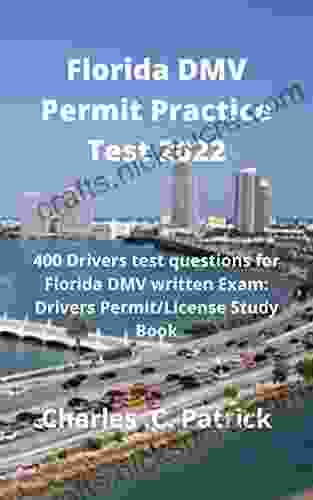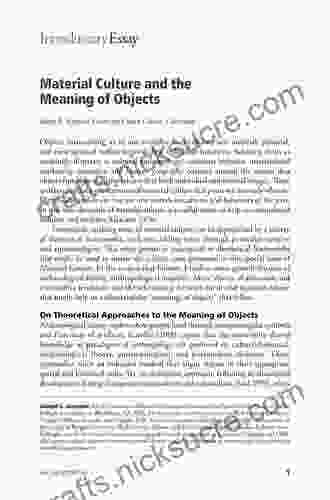Navigating the journey to obtaining your driver's permit and license can be both exciting and daunting. A thorough understanding of the rules, regulations, and responsibilities associated with driving is essential, not only for passing the exam but also for practicing safe and responsible driving habits throughout your life.
Understanding the Permit and License Process
The process of obtaining a driver's permit and license involves two distinct stages:
4.7 out of 5
| Language | : | English |
| File size | : | 5527 KB |
| Text-to-Speech | : | Enabled |
| Screen Reader | : | Supported |
| Enhanced typesetting | : | Enabled |
| Word Wise | : | Enabled |
| Print length | : | 138 pages |
| Lending | : | Enabled |
- Learner's Permit: This temporary permit allows a driver to practice driving under the supervision of a licensed driver.
- Driver's License: After fulfilling the requirements for the learner's permit, you can qualify for a driver's license, which grants you the legal authority to operate a vehicle independently.
Eligibility Requirements
The eligibility requirements for obtaining a driver's permit or license vary from state to state, but generally include the following:
- Minimum Age: Typically, the minimum age to obtain a learner's permit is 15 or 16 years old, while the minimum age for a driver's license is 16 or 18 years old.
- Vision Test: You must pass a vision test to ensure adequate visual acuity.
- Residential Address: Proof of residency is required to verify your eligibility within the state.
- Social Security Number (SSN) or Proof of Legal Presence: Some states require a valid SSN or proof of legal presence for identification purposes.
The Written Exam
The written exam for a driver's permit evaluates your knowledge of traffic laws, road signs, vehicle operation, and safe driving practices. It typically consists of multiple-choice questions that cover:
- Traffic Laws and Signs
- Vehicle Control
- Emergency Procedures
- Road Hazards
- Defensive Driving Techniques
To prepare for the written exam, it is essential to study the driver's manual provided by your state's Department of Motor Vehicles (DMV) or Department of Transportation (DOT). Additionally, practice exams, online study guides, and driver education courses can help reinforce your knowledge.
The Driving Test
Once you pass the written exam, you will be eligible for the driving test, which assesses your practical driving skills. The test typically includes:
- Basic Vehicle Controls: Starting, stopping, and turning the vehicle
- Driving in Normal Traffic Conditions
- Driving through Intersections, Roundabouts, and Crosswalks
- Parallel Parking or Other Maneuvers
To prepare for the driving test, it is recommended to gain supervised driving experience with a licensed driver. Practice different driving scenarios, including driving in various traffic conditions, navigating intersections, and performing maneuvers.
Road Rules and Responsibilities
Obtaining a driver's permit or license is not just about passing the exams. It is also about understanding and adhering to the road rules and responsibilities, which include:
- Obeying Traffic Laws: Complying with speed limits, stop signs, traffic signals, and other regulations.
- Driving Defensively: Anticipating potential hazards, maintaining a safe following distance, and being aware of surroundings.
- Avoiding Distractions: Refraining from using cell phones, texting, or engaging in other activities that can divert attention while driving.
- Never Driving Under the Influence (DUI): Understanding the dangers and legal consequences of driving while intoxicated by alcohol or drugs.
- Maintaining Vehicle Safety: Regularly checking and maintaining your vehicle to ensure proper functioning of brakes, lights, tires, and other safety features.
Tips for Success
To increase your chances of success in obtaining a driver's permit or license, consider the following tips:
- Study diligently: Thoroughly review the driver's manual and practice answering questions.
- Seek supervised driving experience: Gain practice driving in different scenarios with a licensed driver.
- Stay focused during the exams: Read questions carefully and answer them to the best of your ability.
- Maintain composure during the driving test: Follow instructions clearly and stay calm under pressure.
- Practice regularly: Driving is a skill that requires ongoing practice and improvement.
Obtaining a driver's permit and license is a significant milestone that grants you the freedom and responsibility to operate a motor vehicle. By understanding the eligibility requirements, preparing for the written and driving exams, and adhering to road rules and responsibilities, you can navigate the process successfully and become a safe and competent driver.
Remember, driving is not just a privilege but also a responsibility. By consistently practicing safe driving habits, you contribute to the safety of yourself, your passengers, and other road users.
































































































































































































































































































































































































































































































































































